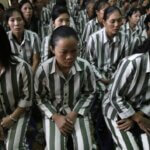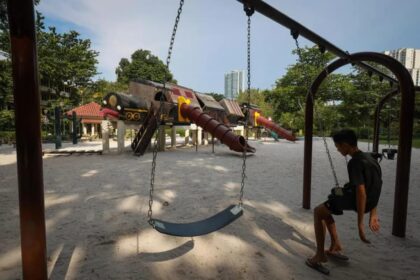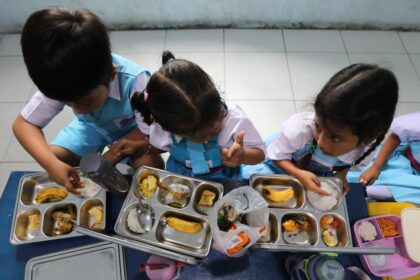Philippines Makes Strides in Reducing Zero-Dose Children
The Philippines has achieved a significant milestone in its public health journey: the number of children under one year old who received no routine vaccinations—known as “zero-dose” children—dropped dramatically in 2023. According to a major study published in The Lancet and corroborated by data from the World Health Organization (WHO) and UNICEF, the number of zero-dose Filipino children fell to 85,907 in 2023, a 47% decrease from 163,000 in 2022. This marks a sharp decline from the 1 million zero-dose children recorded between 2020 and 2022, when the Philippines ranked fifth globally for the highest number of unvaccinated children.
- Philippines Makes Strides in Reducing Zero-Dose Children
- What Are Zero-Dose Children and Why Do They Matter?
- How Did the Philippines Achieve This Turnaround?
- Challenges: Vaccine Hesitancy, Misinformation, and Access
- Impact of the COVID-19 Pandemic
- Current Coverage and Remaining Gaps
- Global Context: The Philippines in the Worldwide Fight Against Vaccine-Preventable Diseases
- Innovations and the Road Ahead
- In Summary
This progress has propelled the Philippines out of the top 20 countries with the most zero-dose children, now ranking 36th worldwide. While this is a remarkable achievement, experts caution that challenges remain, and continued efforts are needed to reach every child with life-saving vaccines.
What Are Zero-Dose Children and Why Do They Matter?
Zero-dose children are defined as those who have not received even the first dose of the diphtheria, tetanus, and pertussis (DTP) vaccine by their first birthday. This vaccine is a cornerstone of childhood immunization programs and is often used as a proxy indicator for access to basic health services. Children who miss out on this and other routine vaccines are at heightened risk for preventable diseases such as measles, polio, and pertussis (whooping cough).
Globally, the issue is significant. In 2023, over 14.5 million children under the age of one did not receive basic vaccines, according to the Centers for Disease Control and Prevention (CDC). Most of these children live in low- and middle-income countries, with more than half concentrated in just ten nations. The Philippines, until recently, was among the top five contributors to this global challenge.
How Did the Philippines Achieve This Turnaround?
The dramatic reduction in zero-dose children in the Philippines is the result of a multi-pronged approach involving government leadership, international partnerships, community engagement, and innovative technology.
Key strategies included:
- School-Based Immunization Programs: The Department of Health (DOH), in partnership with the Department of Education, launched the Bakuna Eskwela program, targeting students in Grades 1, 4, and 7 for catch-up vaccinations. This initiative aimed to reach children who missed their routine shots during infancy, especially those affected by pandemic disruptions.
- Community Outreach and Advocacy: Local health workers, youth advocates, and even religious leaders played a vital role in promoting vaccine acceptance, particularly in hard-to-reach and hesitant communities. In the Bangsamoro Autonomous Region in Muslim Mindanao (BARMM), for example, Muslim religious leaders actively encouraged immunization.
- Innovative Monitoring Tools: The Real Time Vaccination and Monitoring Analysis (RT-VaMA) toolkit, developed with UNICEF support, enabled real-time tracking of vaccination progress. This technology streamlined data collection, identified gaps, and allowed for rapid “mop-up” activities to vaccinate missed children.
- Strengthening Health Systems: Investments in cold chain management, supply chain logistics, and health worker training ensured that vaccines remained effective and accessible, even in remote areas.
These efforts were supported by coalition-building at the national and local levels, with significant investments from partners such as USAID and the Australian Government. The National Immunization Acceleration Plan for 2024-2025 continues to prioritize reaching the remaining unvaccinated children.
Challenges: Vaccine Hesitancy, Misinformation, and Access
Despite the progress, the Philippines still faces persistent challenges in achieving universal immunization coverage. Vaccine hesitancy remains a significant barrier, fueled in part by past controversies such as the Dengvaxia dengue vaccine incident, which eroded public trust in vaccines. Misinformation and myths about vaccine safety continue to circulate, making some parents reluctant to have their children immunized.
Dr. Jennifer Lou Lorico-De Guzman, medical coordinator for the national immunization program in Taguig, explains:
“There are myths that these particular vaccines give you the disease itself. So, there’s a lot of controversies. We are trying to educate the public about the importance of vaccines.”
Outreach teams, including health workers and community advocates, have responded by going door-to-door, providing information, and addressing concerns directly with families. In some communities, grandparents exert significant influence over vaccination decisions, requiring tailored communication strategies to build trust.
Geographical barriers also pose challenges. The Philippines is an archipelago with over 2,000 inhabited islands, making logistics and vaccine delivery to remote areas complex. Cold chain requirements—keeping vaccines refrigerated—add another layer of difficulty, especially in regions with limited infrastructure.
Impact of the COVID-19 Pandemic
The COVID-19 pandemic disrupted health services worldwide, and the Philippines was no exception. Lockdowns and movement restrictions kept families from accessing routine medical appointments, leading to a sharp rise in zero-dose children in 2020 and 2021. According to The Lancet study, global rates for key vaccines declined sharply during the pandemic and have yet to return to pre-pandemic levels in many countries.
However, the pandemic also spurred innovation and renewed commitment to immunization. The WHO’s “Big Catch-Up” campaign and the Philippine government’s acceleration plans focused on regaining lost ground, with targeted efforts to reach the most vulnerable populations.
Current Coverage and Remaining Gaps
As of 2023, the Philippines reported a 96% coverage rate for the first dose of the DTP vaccine among children under one year, ranking 75th out of 204 countries. However, only 62% of eligible children were considered fully immunized—meaning they received all recommended doses of key vaccines—by their first birthday. This is a slight improvement from 60% in 2022, but still short of the 95% target needed to prevent outbreaks of diseases like measles and polio.
Health Secretary Teodoro Herbosa has set an ambitious goal: to achieve 95% full immunization coverage by 2025. The DOH is working to address gaps in data, particularly for children vaccinated in private facilities, and to ensure that no child is left behind.
Global Context: The Philippines in the Worldwide Fight Against Vaccine-Preventable Diseases
The Philippines’ progress is notable against a backdrop of global challenges. According to the CDC, one in five children worldwide still lacks access to life-saving vaccines. The majority of zero-dose children are concentrated in conflict-affected regions and countries with limited resources, particularly in sub-Saharan Africa and South Asia.
Routine childhood vaccinations are among the most powerful and cost-effective public health interventions. Each dollar spent on immunization saves $52 in low- and middle-income countries, and it costs just $18 per child to fully immunize children in the world’s poorest nations. Yet, persistent inequities, pandemic disruptions, and the spread of vaccine misinformation threaten to stall or reverse decades of progress.
Dr. Jonathan Mosser, senior author of The Lancet study, emphasizes the stakes:
“Routine childhood vaccinations are among the most powerful and cost-effective public health interventions available, but persistent global inequalities, challenges from the COVID-19 pandemic, and the growth of vaccine misinformation and hesitancy have all contributed to faltering immunization progress. These trends increase the risk of outbreaks of vaccine-preventable diseases, underscoring the critical need for targeted improvements to ensure that all children can benefit from lifesaving immunizations.”
Innovations and the Road Ahead
The Philippines’ experience offers valuable lessons for other countries striving to reduce zero-dose children. The integration of real-time monitoring tools like RT-VaMA, the mobilization of local leaders and youth advocates, and the focus on equity and community engagement have all contributed to the nation’s success.
UNICEF Acting Representative Behzad Noubary highlights the importance of sustained investment and local leadership:
“Routine immunization has saved many lives in the Philippines by eliminating maternal and neonatal tetanus, containing measles outbreaks, and ending polio transmission in 2021. The government’s continued investment in the national immunization programme will build resilient, sustainable systems, especially in the last mile. Our children’s future, where they are healthy, protected, surviving, and thriving, is the dose of good news we need in unpredictable times.”
Looking ahead, the DOH, WHO, and UNICEF are working to further integrate immunization into broader health strategies, ensuring that every adolescent, mother, newborn, and child benefits from the power of vaccines. The upcoming World Immunization Week and ongoing school-based campaigns are part of this sustained push.
In Summary
- The number of zero-dose children in the Philippines dropped by 47% in 2023, from 163,000 to 85,907, down from 1 million in 2020-2022.
- The country exited the top 20 list of nations with the most unvaccinated children, now ranking 36th globally.
- Key strategies included school-based immunization, community outreach, innovative monitoring tools, and strengthened health systems.
- Challenges remain, including vaccine hesitancy, misinformation, and logistical barriers in remote areas.
- The COVID-19 pandemic disrupted progress but also spurred renewed commitment and innovation in immunization efforts.
- Full immunization coverage remains below the 95% target, with ongoing efforts to close the gap by 2025.
- The Philippines’ experience offers lessons for global efforts to reach every child with life-saving vaccines.












